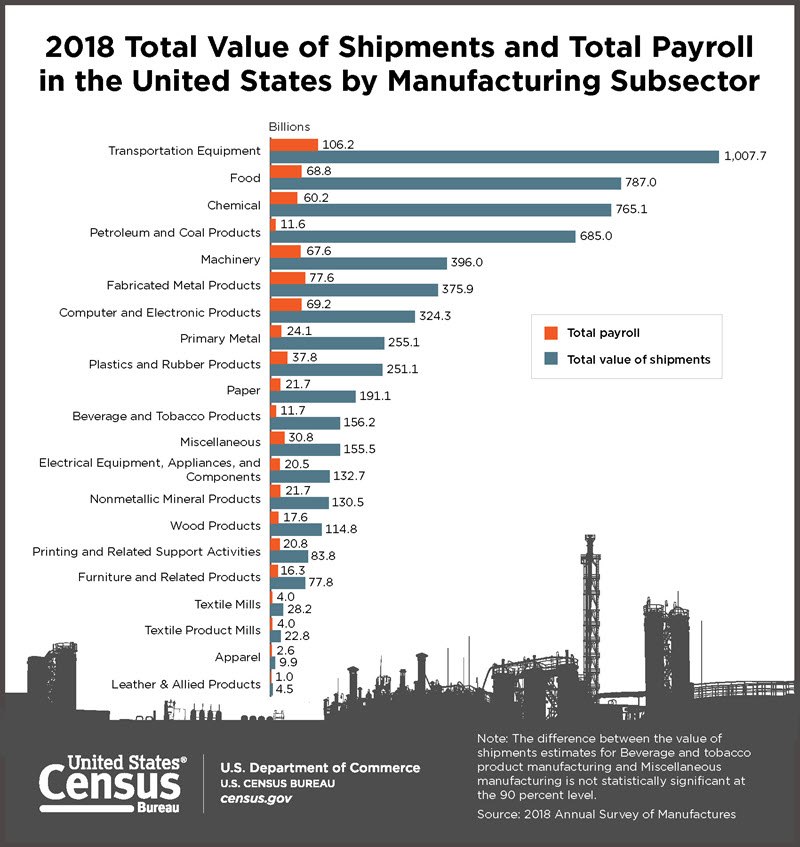Infographic Shows Total Value of Manufacturing Shipments and Payroll
The U.S. Census Bureau has released its most detailed statistics on the U.S. manufacturing sector in more than two years.
The stats come from the newest Annual Survey of Manufactures (ASM), which contains info for survey year 2018. The ASM is not collected in Economic Census years — years ending in ‘2’ and ‘7.’
Also available: an infographic of 2018 ASM data outlining the total value of shipments and total payroll in the United States in the manufacturing sector.
The 2018 ASM Summary Statistics table provides data on:
- Employment
- Payroll
- Cost of materials consumed
- Operating expenses
- Value of shipments
- Value added by manufacturing
- Fuels and electric energy used
- Inventories
Additionally, the ASM provides the most detailed measure of U.S. manufacturing industry outputs and inputs.
The ASM includes manufacturing establishments (or the physical location of the manufacturing plant) with one or more paid employees, or nonemployers that use leased employees. In addition, it displays statistics at the 3-, 4- and 6-digit NAICS (North American Industry Classification System) level.
The infographic above shows the leading U.S. manufacturing industries by total value of shipments and payroll.
For example, Transportation Equipment had the greatest total value of shipments in the manufacturing sector with over $1 trillion – the first manufacturing subsector to surpass the $1 trillion mark. This NAICS category also has a total payroll of over $105 billion.
Food manufacturing ($787 billion in total values of shipments) and chemical manufacturing ($765 billion in total value of shipments) followed as the next largest producers in the manufacturing sector.
Key data users of the ASM results include the Bureau of Economic Analysis (BEA), the Bureau of Labor Statistics (BLS), as well as the Federal Reserve Board (FRB).
The BEA uses the published data to produce gross domestic product (GDP) estimates. The BLS uses the info to calculate annual productivity series and update producer price indexes. And the FRB uses ASM data points to prepare the Index of Industrial Production.
Adam Grundy is a supervisory statistician in the Economic Management Division at the Census Bureau.
Stats for Stories
Stats for Stories







